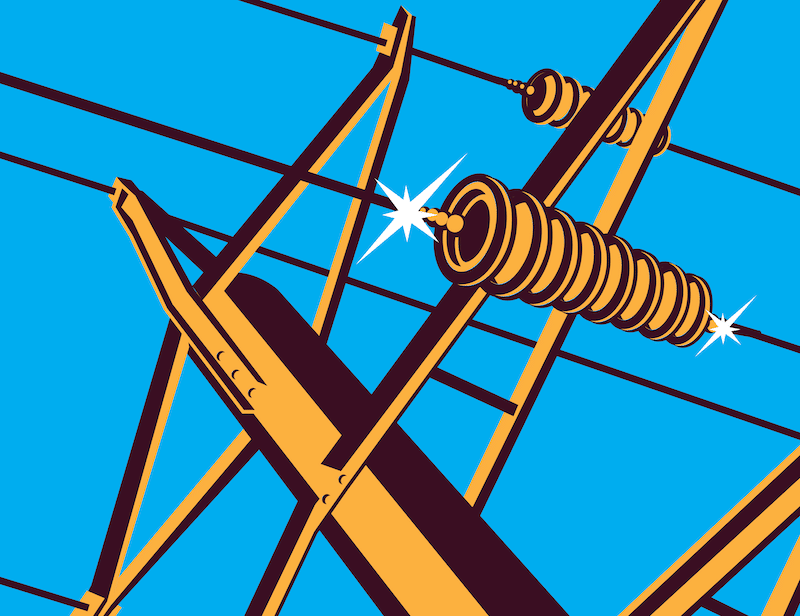Distributed energy has long been seen as a challenge to utilities. A power revolution that will change electricity provision, allow new players into the sector and, of most concern to utilities, alter the flow of money within the industry.
However, 2016 has seen a change of attitude by an increasing number of traditional power providers who now accept the inevitability of a distributed energy system and the need to adapt to the new opportunities it will bring.

Traditionally, the power sector — be it regulated or deregulated, wholesale or retail — operated on one simple premise: we have the power, and when our customers need it, we will provide it. Considering this, even with limited or no load growth, the electric power sector had been counting on long-term earnings growth, and therefore, shareholder value creation via the so called virtuous cycle: capital investment leading to satisfied customers, in turn leading to accommodating regulators.
Utilities have operated for several decades in an environment that does not reward innovation. In the past 20 years, R&D investment by utilities has declined rapidly. Utilities are finally waking up to the fact that they will need to balance new investments and experimentation with tracking results in a cost-conscious environment.
Earlier this month, the biggest players of the US power sector came together at that DistribuTech conference in Orlando, Florida, to explore the future of the power industry. Unlike previous events, this year’s conference focused on the opportunities rather than the threats to the stalwarts of the industry, and the growing need for a unified control system to manage the change.
“Whether it’s a distributed system whereby you’ve got more edge intelligence, or whether it all comes back centrally, some of that architecture needs to be worked out”, said Scott Bordenkircher, head of technology innovation and integration at Arizona Public Service. “But you’re definitely going to need a system, because you’re not going to have an operator sitting there 24/7 trying to control several hundred random things on the grid”.
Many leading experts at DistribuTech reinforced the message that distributed energy technologies are not necessarily a threat to utilities. They can offer reliability services when aggregated, as well as dynamic control and dispatch, greater situational awareness of grid conditions, decreased operations and fuel costs, and new investment opportunities for customer-centric solutions. Furthermore, utilities are in a good position to harness these technologies and play a central role in the future power system.
In many developed markets, distributed energy is flourishing beyond early-adopter markets, convincing utilities that there is now way back and ensuring that all stakeholders across the industry will be forced to adapt or perish.
In Australia, a nation with an abundance of sunlight and a grid that struggles with the great distances it must cover, we have seen some of the highest levels of PV adoption. The continent / country can be seen as a guinea pig for distributed power systems evolution. In December a presentation by Western Australia’s state-owned electricity retailer, Synergy, suggested that, within a decade, residential buildings may use the grid for only 10% of their energy supply, thanks to a combination of smart building and appliances, together with solar and battery storage.
[contact-form-7 id="3204" title="memoori-newsletter"]
“Momentum is rapidly building from disruptive technologies that are empowering consumers and changing the face of the sector. Expect the unexpected”, said Matt Rennie, EY Oceania Power & Utilities. Rennie says energy technology – particularly battery storage and accompanying smart technologies – as well a growing consumer shift to grid independence will also set off a new wave of M&A, with technology companies and utilities forming partnerships to retain their roles in the value chain.
“Australia is seen by many as a test-bed for battery storage technology innovation, with relatively high retail electricity prices, the highest penetration of rooftop solar PV in the world and a tech-savvy population”, Rennie says. “So we expect M&A activity in Australia to be stimulated by this continued adoption of rooftop solar and a growing consumer inclination toward grid independence”.
Utilities in Australia are responding to this trend by seeking out partnerships with battery storage firms such as Tesla and Panasonic, allowing them to offer customised services to their consumers. Electricity companies in the US, Europe and elsewhere will be watching with great interest as they plan their own strategies for the next three to four years.
Distributed energy is on a trajectory to become a cheaper source of power than bundled utility service offerings that are based on today’s power supply portfolio. Many predict that distributed energy will reach parity with utilities’ average rates by 2020, particularly when combined with other factors like energy efficiency and energy management services and technologies. Increasingly, utilities will feel the impact on profitability as the customer adoption of distributed energy reduces revenue associated with electricity provided by the utility.
2016 is the year for utilities to start transforming their business models so they are able to compete. They must fundamentally redefine and aspire to the standards of competitive leadership, undergoing a radical shift in the way they think about performance. Incremental improvement programs will not suffice, further opposition to distributed energy is futile and the right adaptation strategy could see utilities increasing their bottom line.



